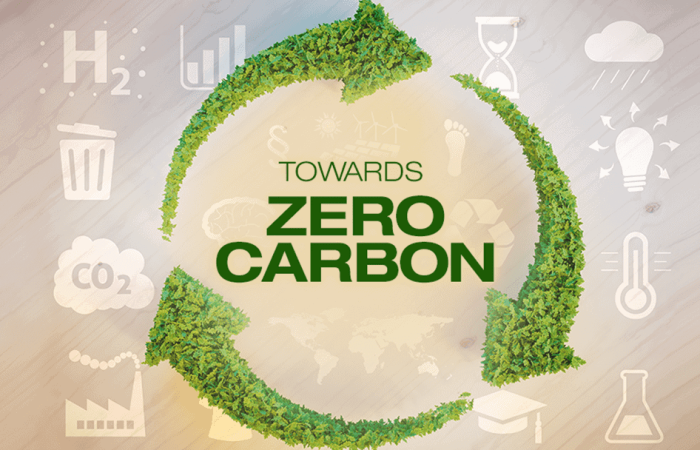
Introduction
The construction industry has a significant role in reducing carbon emissions and addressing the climate crisis. One of the most important contributors to greenhouse gas emissions in the construction industry is the use of furnaces. In this blog, we’ll examine the future of furnaces and what steps are being taken to address the carbon pledge challenge.
The Carbon Pledge Challenge
The carbon pledge challenge is a call to action for the construction industry to reduce its carbon footprint and become more environmentally friendly. The challenge calls for the industry to reduce greenhouse gas emissions, improve energy efficiency, and promote clean and renewable energy sources. To meet this challenge, the construction industry must find new and innovative ways to reduce emissions from furnaces and other sources.
The Problem with Traditional Furnaces
Traditional furnaces typically fueled by natural gas or oil are major sources of greenhouse gas emissions. In addition, they are often inefficient, wasting energy and increasing emissions. The construction industry must find new and innovative technologies to replace traditional furnaces to reduce their carbon footprint.
The Future of Furnaces
The future of furnaces is focused on finding new and innovative ways to reduce emissions and improve efficiency. Some of the latest technologies being developed to address the carbon pledge challenge include:
-
High-Efficiency Furnaces
High-efficiency furnaces are designed to reduce energy waste and increase efficiency. These furnaces use advanced technology to capture more heat from the fuel source, reducing the energy required to heat a building and reducing emissions.
-
Clean Energy Furnaces
Clean energy furnaces are designed to run on clean and renewable energy sources, such as solar or wind power. These furnaces can significantly reduce emissions and help the construction industry meet the carbon pledge challenge.
-
Heat Pump Furnaces
Heat pump furnaces use electricity to heat a building, reducing the need for traditional fuel sources and reducing emissions. Heat pump furnaces are an excellent alternative to traditional furnaces for new construction projects or building renovations.
-
Geothermal Furnaces
Geothermal furnaces use the heat from the earth to heat a building, reducing the need for traditional fuel sources and reducing emissions. Geothermal furnaces are a clean and efficient alternative to traditional furnaces, and they are becoming increasingly popular in the construction industry.
The Impact of Carbon Pledges on Furnace Operations
Carbon pledges are commitments organizations make to reduce carbon emissions and donate to the fight against climate change. These pledges are becoming increasingly important in the global effort to reduce emissions and address the climate crisis.
-
The Importance of Carbon Pledges in the Furnace Industry
The furnace industry is one of the largest sources of carbon emissions. As such, it must play its part in reducing emissions and meeting carbon pledges. Furnace operations can significantly impact the environment, and addressing this issue is critical to meeting carbon pledges and contributing to the fight against climate change.
-
The Impact of Carbon Pledges on Furnace Operations
Carbon pledges significantly impact furnace operations, as companies must take steps to reduce their emissions to meet their commitments. It can include investing in cleaner technologies, improving energy efficiency, and reducing waste. Furnace operations may also need to adopt new procedures, such as utilizing renewable energy sources and incorporating sustainable building design principles.
-
The Benefits of Meeting Carbon Pledges
Meeting carbon pledges can bring many benefits to furnace operations. By reducing emissions, companies can improve their reputation and attract more business, as consumers and businesses are increasingly concerned regarding the environmental impacts of their products and services. Reducing emissions can also help to reduce costs, as companies can save on energy bills and reduce the cost of complying with regulations.
-
Challenges in Meeting Carbon Pledges
There are also some challenges that companies must overcome to meet their commitments. One of the main challenges is the cost of investing in new technologies and practices. Another challenge is the need for more awareness and understanding of the importance of carbon pledges and the need to reduce emissions. Companies may also need more support from employees and stakeholders unfamiliar with the benefits of meeting carbon pledges.
-
Overcoming the Challenges of Meeting Carbon Pledges
There are several strategies that companies can adopt to overcome the challenges of meeting carbon pledges. These include investing in research and development to find new and innovative ways to reduce emissions, educating employees and stakeholders on the importance of reducing emissions, and providing incentives and rewards for companies that successfully meet their carbon pledges.
Conclusion
The impact of carbon pledges on furnace operations is significant, as companies must take steps to reduce their emissions to meet their commitments. It must overcome some challenges. Meeting carbon pledges can bring many benefits, including improved reputation, reduced costs, and a more sustainable future. Companies that complete their carbon pledges will be well-positioned to use the growing demand for environmentally friendly products and services.
‘Precons Furnaces‘ are hopeful that this can be the most crucial decade for climate action if we use new technologies, invest in the proper infrastructure and tools, and give partners, nonprofits, and people more power. We’re proud to do our part and help move the world toward a future without carbon for everyone.
Contact us right away if you want to find out more about our products or get a quote. Do Follow our Social Media pages for recent updates. Facebook | Instagram